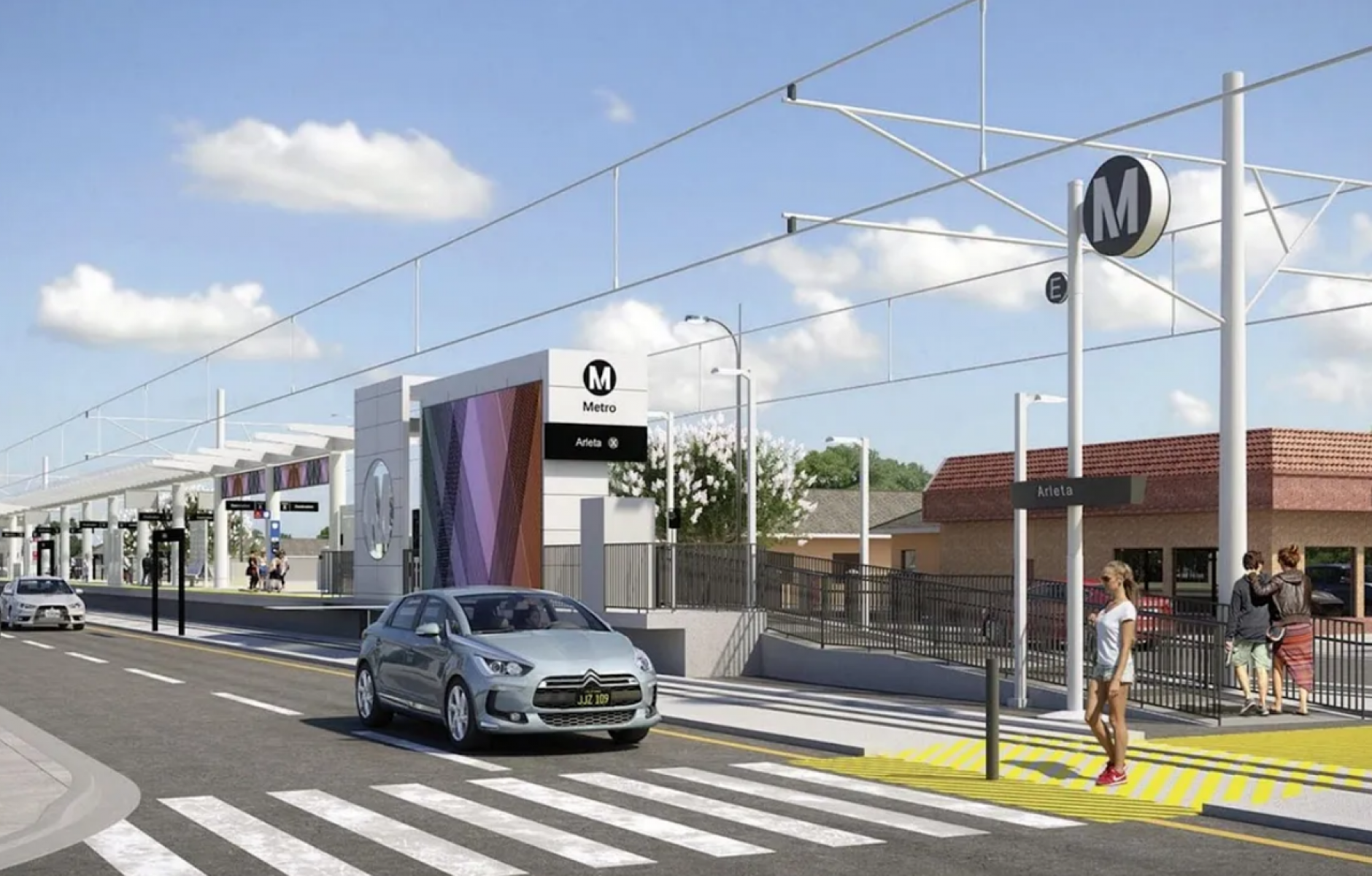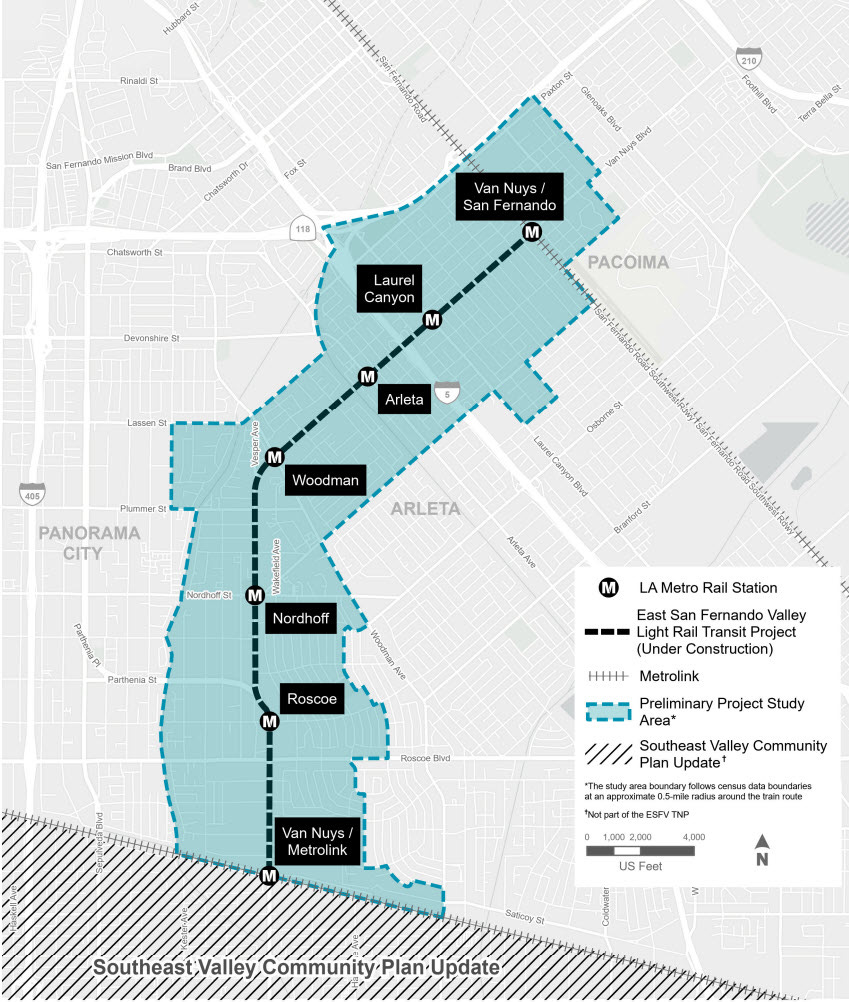
Transforming LA’s sprawl: a community call to action
Home to 3.9 million people, the city of Los Angeles is often thought of as a car-centric, sprawling city. In an effort to transform the way Angelenos travel through the city, many initiatives and plans have been set in motion, from former L.A. Mayor Eric Garcetti’s “Twenty-Eight for ‘28” to LA Metro’s Vision 2028 to LA’s Mobility Plan 2035. However, big-picture policy, even when backed by funding, cannot transform LA. Communities that will benefit from changes must support the policies and lead the discussion of solutions for transforming sprawl for high-level ideas to become a successful reality.
Earlier this year, LA secured 900 million dollars in federal funding for public transportation improvements ahead of the 2028 Olympics. LA Metro will use this funding to construct transit stations previously proposed in Vision 2028, including the East San Fernando Valley Light Rail Transit Program (ESFV LRT), sections 2 and 3 of the D Line of the Metro, and other safety improvements. With hopes to improve community connectivity that continues long after the Olympics, these new lines and stations will provide transit connections to major job centers, as well as regional transit providers such as MetroLink and Amtrak.
To properly serve these communities, the design of these stations must prioritize community engagement, ensuring that residents determine what these stations and the future developments around them look like. For the ESFV LRT, decisions are still being made about the stations, making it critical for community members to make themselves heard at the planned community meetings. According to Metro’s website, a virtual community meeting was held on July 24, with a follow-up in-person meeting held on July 31. Community members are highly encouraged to attend these meetings and others posted by LA Metro.
In addition to the immediate concerns about how the new light rail line will travel through the SFV, there are other long-range implications that community members should anticipate. Transit Oriented Communities (TOCs) enable mixed-use, mixed-income development centered around major transit hubs, allowing residents to live, work, and play within a short walk or transit ride. TOCs should include and prioritize affordable housing as a means to address the ongoing mobility and shelter needs of all community members, especially those transit-dependent or low-income. Many California laws enable and encourage TOCs and affordable housing, including:
- The TOD Housing Program, which encourages higher-density affordable housing within a quarter mile of transit,
- AB2097, which prevents jurisdictions from enforcing minimum parking requirements within a quarter mile mile of transit stops because minimum parking requirements can significantly diminish the number of units provided due to space constraints, and
- AB1287, which builds on the California Density Bonus Law, incentivizing affordable housing by providing a density bonus with additional concessions based on the percentage of units which are affordable at different income levels.
In addition to state incentives, the city of Los Angeles is in the “Listening” phase of the East San Fernando Valley Transit Neighborhood Plan. This plan will include zoning changes to enable greater transit ridership, affordable housing, and economic opportunities throughout the project area. Community members should sign up for updates on the project and make themselves heard throughout this public engagement process, as these changes will impact how the neighborhoods around these new transit stops look and operate for years to come.

An important part of gaining public support is recognizing the need for affordable housing and anti-displacement strategies to ensure that existing community members can benefit. While the existing incentives may suggest that affordable housing will inevitably be built as a part of the TOCs, the reality is that existing TOCs within LA suggest otherwise. As these new stations are created, the city of LA must centralize affordable housing and anti-displacement policies, such as Community Land Trusts, Right of First Refusal, and Renter’s Protections, as key components of these future TOCs. The city must also continue to keep the communities involved in the design of these stations, ensuring that the communities affected by it are at the forefront of the conversation.
While this article has highlighted many things that jurisdictions and LA Metro should prioritize, a big question remains: how can community members ensure that these things will happen as promised? Measure HLA sets a precedent for how community support behind a policy can ensure ambitious plans are delivered as originally planned. Measure HLA, passed in March, was a citizen-sponsored ballot initiated by Streets for All. Measure HLA will enable LA’s Mobility Plan 2035 to be accomplished much more rapidly by requiring that Mobility Plan improvements are implemented on city streets whenever routine repaving of streets occurs each year. To put it simply, Measure HLA ensures that a city-wide policy that was lagging behind its targeted goal will now be delivered as promised. Community members who feel inspired by Measure HLA may consider joining similar groups in LA, such as Streets for All, LA Forward, LA2050, Los Angeles Walks, ACT-LA, and BikeLA, which educate and advocate for improvements to the built environment that benefit communities.
Looking at Measure HLA and learning of the city’s many plans for transforming sprawl, Angelenos should feel empowered to rally together and participate in the implementation of Vision 2028. For people living in LA, as well as members of communities everywhere, take action and become involved in the conversation. With many possible outcomes to be determined and funding secured, the new LA Metro stations can have lasting, positive impacts on communities, should these communities feel empowered to demand it.
Note: This article first appeared in the ENU Newsletter, a newsletter written by Emerging New Urbanist members about topics and debates within the movement. Subscribe to the newsletter.




